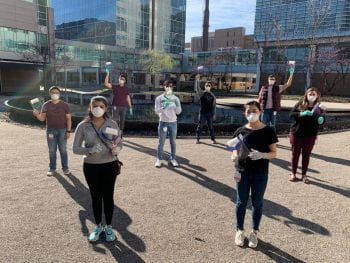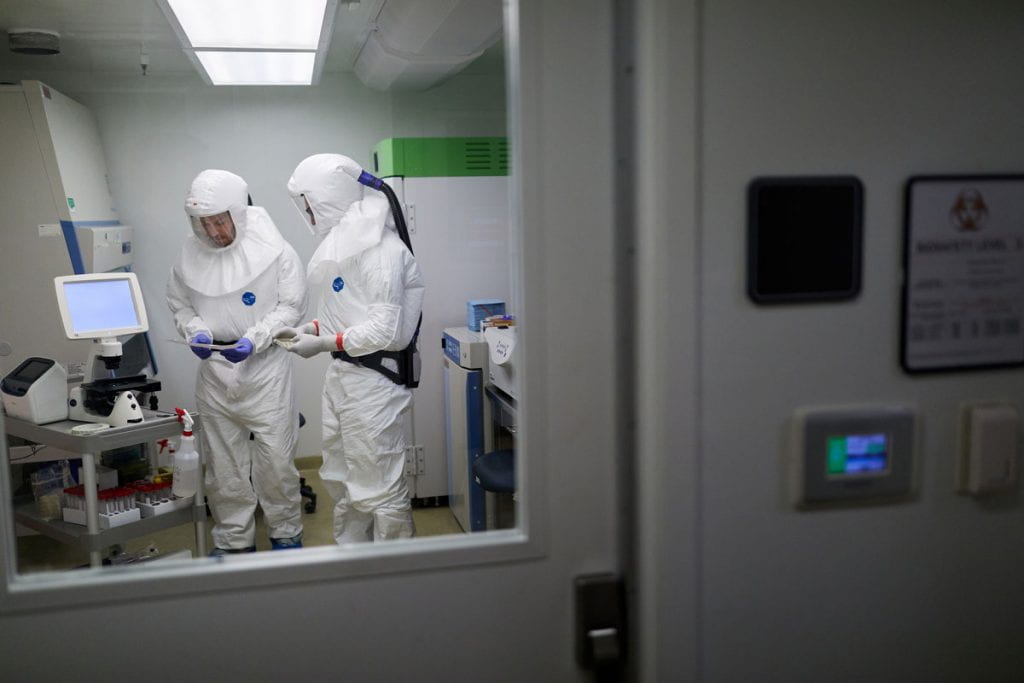In March 2020 alone, the Washington University in Saint Louis (WashU) community logged 222,162 hours in 44,674 Zoom meetings. Up from a meager 294 individuals in November 2019, the number of registered institutional Zoom users skyrocketed to 24,808 as of April 9, according to Matthew Arthur, Director of A/V and Media Services for WashU IT. As we adjust to altered workflows in our daily lives, I suspect we are beginning to see the importance of communication in a new light. People are using technology in creative ways to overcome physical distance and effect meaningful change under rapidly evolving circumstances.
For instance, efforts led by WashU’s COVID-19 Medical Student Response Team recently spurred face shield production, free childcare, linguistic translation services, literature review, and more to support healthcare workers. Avira Som, a third year medical student and co-leader of the face shield production team, joined this effort when she heard about the shortages of protective equipment faced by the hospital staff.
“The role of communication has been incredibly important,” said Som. “Our initiatives involve people from all different fields offering their expertise including doctors, engineers, nurses, crafters, public health officials, and translators to name a few.”
In spite of the pervasive fear and uncertainty surrounding the pandemic, we have many reasons to be hopeful. Researchers faced with one of the greatest scientific challenges of the modern era—vaccine development in the midst of a pandemic—have risen to the occasion in remarkable ways. At WashU and institutions around the world, labs rapidly established new collaborations to redirect existing investigative systems toward COVID-19 research. Dr. Michael Diamond, Associate Director of the Center for Human Immunology and Immunotherapy Programs, leads a team of researchers from all over campus, including the Departments of Pathology and Immunology, Microbiology, Genetics, and Biochemistry and Molecular Biophysics. Projects include analysis of viral protein structure, identification of therapeutic antibodies, vaccine development, and more.
One M.D., Ph.D. student in Dr. Kory Lavine’s lab, Sasha Dmytrenko, found himself suddenly shifting gears to adapt his experimental model for studying the effects of COVID-19 on the heart. “My original project focused on immune signaling in the heart during injury,” he explained. “I definitely could not have imagined studying viral pathogenesis when I joined the lab. However, we have the appropriate mouse and cell culture models plus significant background in cardiac immune responses. It seemed natural to use this opportunity to contribute to the knowledge base.”
In a research landscape subject to quick changes, scientists must continually inform one another of their progress. “It is hard to overestimate the value of regular communication in this work,” Dmytrenko continues. “Sharing the data regularly helps us efficiently move forward and develop clear plans to coordinate a multi-lab research effort.”
Scientists, together with public health organizations and media outlets, have been charged with another critical task: conveying accurate, meaningful information to the public. Some communication strategies have proven effective, while others have revealed room for improvement. Explaining the need for people to stay home represents one challenging aspect of infection control. #FlattenTheCurve, a topic trending on social media, succinctly conveys how staying home reduces infection transmission.
“It’s simple, paints a picture, and has a rhythm to it,” said Hank Dart, Senior Health Communications Lead at the WashU School of Medicine. However, Dart asserted that scientists cannot rely too heavily on complex graphs. For this reason, other messages with clear imagery, such as “Stop the Spread,” may be more effective at communicating with the public.

Crafting these messages is far from easy, especially with diverse target audiences. According to Dr. Vetta Thompson, Co-Director of WashU’s Center for Community Health Partnership and Research, public health communications appearing in the media tend to target middle-class, professional families.
“This messaging represents a failure to provide social distancing and isolation guidance for all members of our society such as individuals unable to work from home, living in dense housing, using public transportation, or unable to afford health care,” Dr. Thompson said. She added that an early emphasis on limiting foreign travel contributed to additional miscommunication. A failure to highlight the purpose of these containment measures led to a false sense of safety in many communities. (For more on how COVID-19 highlights racial health inequalities in particular, check out this article by Kamaria Lee, a third year medical student.)
Exchanging knowledge among healthcare professionals, scientific researchers, and the broader community has become more important than ever before. In the coming months, a commitment to clear and compassionate communication will strengthen our efforts to overcome the impacts of COVID-19. The more we listen to and learn from the experiences of others, the more effective our messages will become.
Written by Kendall Burks
Edited by Marissa Locke
